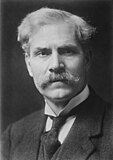1929 United Kingdom general election in Scotland
This article needs additional citations for verification. (July 2016) |
| |||||||||||||||||||||||||||||||||||||||||||||
All 74 Scottish seats to the House of Commons | |||||||||||||||||||||||||||||||||||||||||||||
|---|---|---|---|---|---|---|---|---|---|---|---|---|---|---|---|---|---|---|---|---|---|---|---|---|---|---|---|---|---|---|---|---|---|---|---|---|---|---|---|---|---|---|---|---|---|
| |||||||||||||||||||||||||||||||||||||||||||||
 Results of the 1929 election in Scotland Unionist Labour Liberal | |||||||||||||||||||||||||||||||||||||||||||||
The 1929 United Kingdom general election was held on Thursday 30 May 1929, and all 74 seats in Scotland were and resulted in a hung parliament. It stands as the fourth of six instances under the secret ballot, and the first of three under universal suffrage, in which a party has lost on the popular vote but won the highest number (known as "a plurality") of seats versus all other parties – others are 1874, January 1910, December 1910, 1951 and February 1974. In 1929, Ramsay MacDonald's Labour Party won the most seats in the House of Commons for the first time. The Liberal Party re-led by ex-Prime Minister David Lloyd George regained some ground lost in the 1924 election and held the balance of power. The Election results in Scotland saw a dramatic swing towards the labour party led by Scottish leader Ramsay MacDonald (Although at the time he represented a seat in London). These results followed a general swing towards Labour at this election.[1]
The election was the first in which women aged 21–29 had the right to vote (owing to the Representation of the People Act 1928). Women over 30, with some property qualifications, had been able to vote since the 1918 general election, but the 1929 vote was the first general election with universal suffrage for adults over 21, which was then the age of majority.
Scotland was allocated 74 seats in the House of Commons, with 71 territorial seats (32 burgh constituencies and 38 county constituencies).[c] There was also one university constituency, which elected an additional 3 members using the Single Transferable Vote (STV) method.[2] As voters in university constituencies voted under a different system, and in addition to their territorial vote, the results are compiled separately.
Results
[edit]Seats summary
[edit]| Party | Seats | Last Election | Seats change | ||
|---|---|---|---|---|---|
| Labour Party | 36 | 26 | |||
| Unionist | 22 | 38 | |||
| Liberal | 14 | 9 | |||
| Scottish Prohibition | 1 | 1 | |||
| Other | 1 | 0 | |||
| Total | 74 | 74 | |||
Burgh & County constituencies
[edit]| Party | Seats | Seats change | Votes | % | % Change | |
|---|---|---|---|---|---|---|
| Labour | 36 | 937,300 | 42.3 | |||
| Unionist | 20 | 792,063 | 35.9 | |||
| Liberal | 13 | 407,081 | 18.1 | |||
| Communist | 0 | - | 27,114 | 1.1 | ||
| Scottish Prohibition | 1 | - | 25,037 | 1.1 | ||
| National Party of Scotland | 0 | - | 3,313 | 0.2 | New | |
| Other | 1 | 51,033 | 1.3 | |||
| Total | 71 | 2,242,941 | 100 | |||
University constituency
[edit]The Combined Scottish Universities elected an additional 3 members to the house using the STV voting method.
| Party | Candidate | FPv% | Count | ||
|---|---|---|---|---|---|
| 1 | 2 | ||||
| Unionist | John Buchan | 39.7 | 9,959 | ||
| Liberal | Dugald Cowan | 26.7 | 6,698 | ||
| Unionist | George Berry | 22.9 | 5,755 | 9,262 | |
| Labour | James Kerr (Scottish doctor) | 10.7 | 2,691 | 2,867 | |
| Electorate: 43,192 Valid: 25,103 Quota: 6,276 Turnout: 25,103 | |||||
Votes summary
[edit]Notes
[edit]References
[edit]- ^ William Kenefick (2007). Red Scotland!: The Rise and Fall of the Radical Left, C. 1872–1932. Edinburgh University Press. pp. 202–203. ISBN 978-0-7486-2517-8.
- ^ "Research Briefing: Voting systems in the UK". Library of the House of Commons. 10 January 2023. Retrieved 26 November 2024.
- ^ The Times, 11 June 1929



